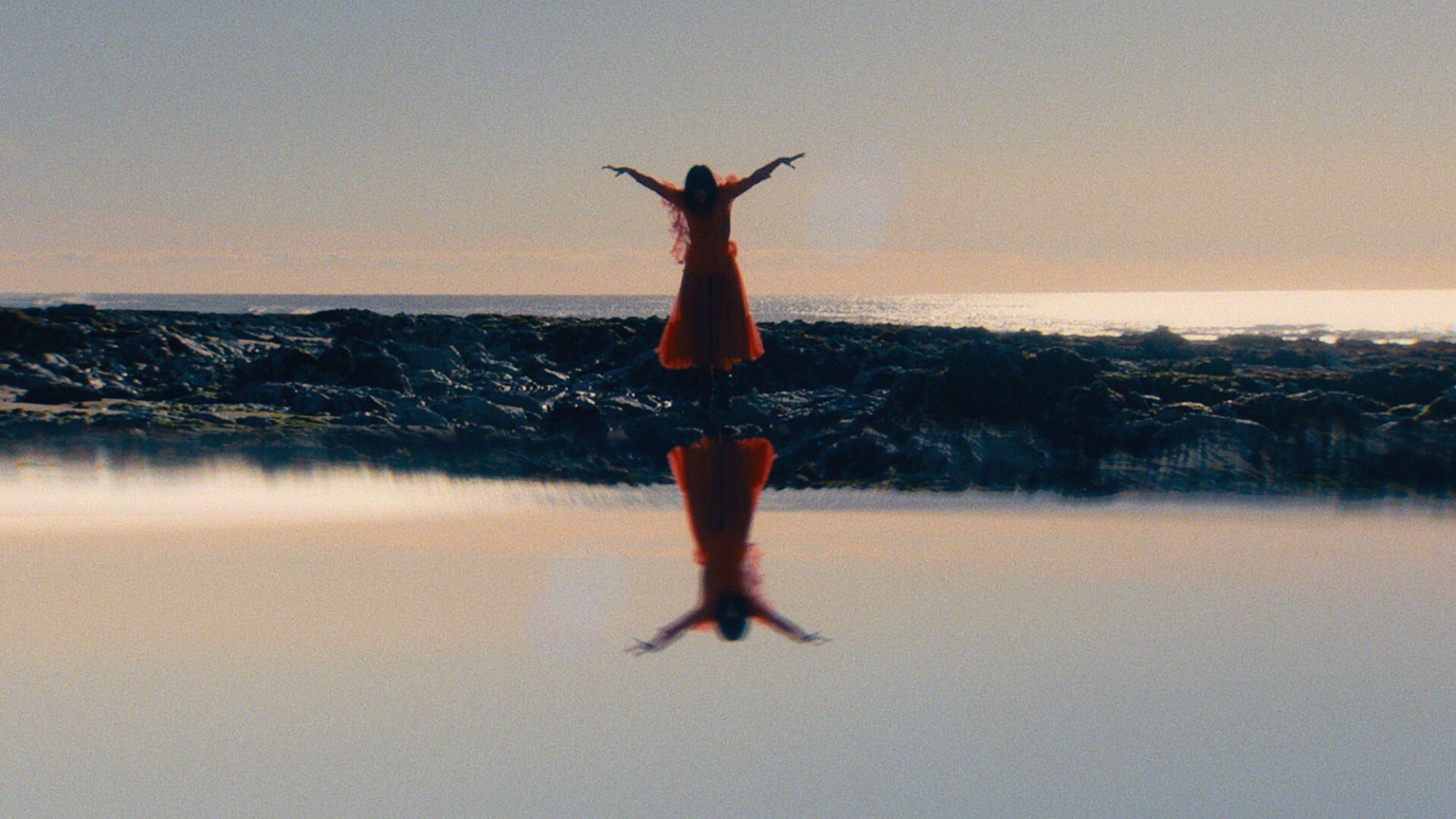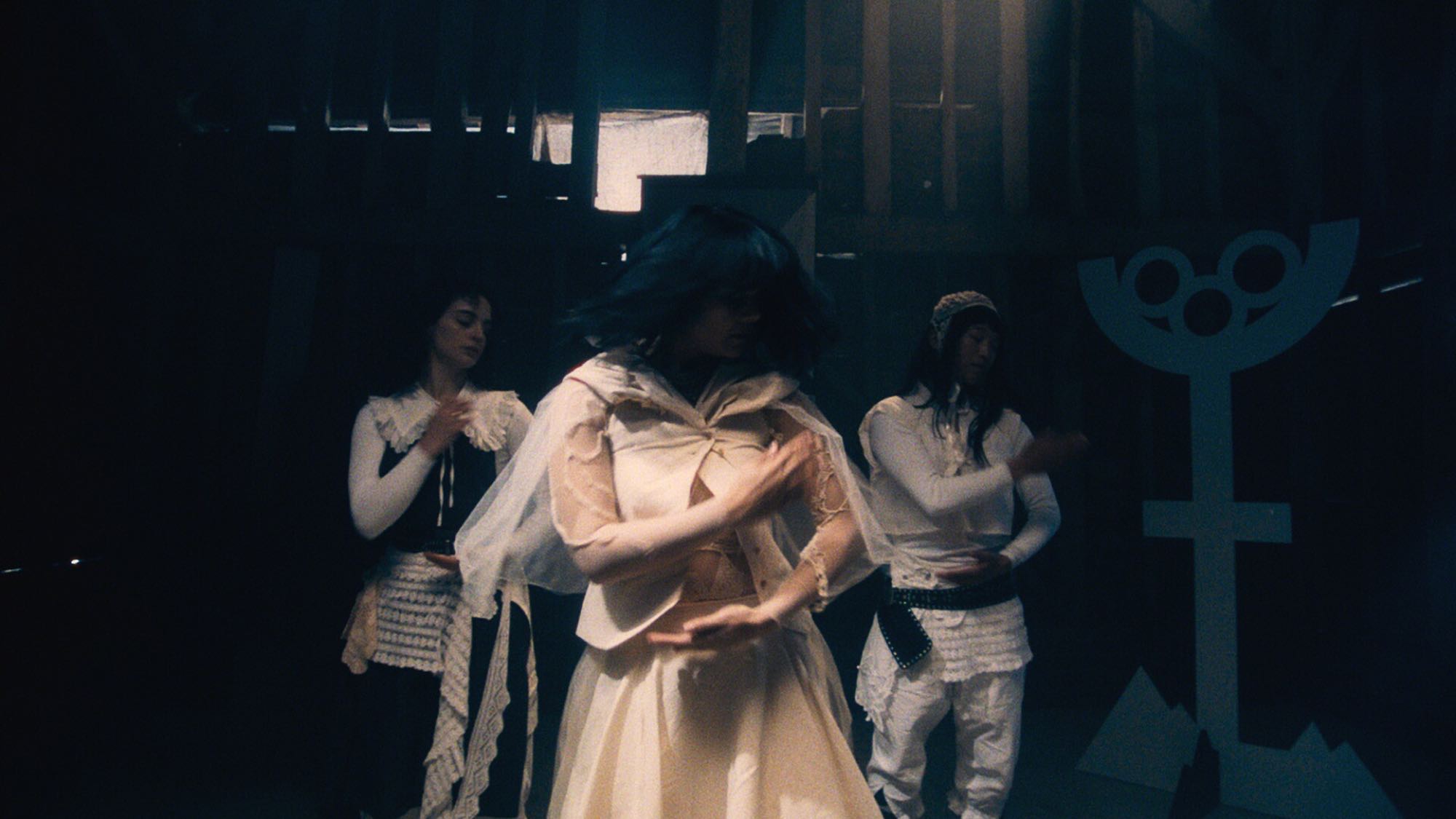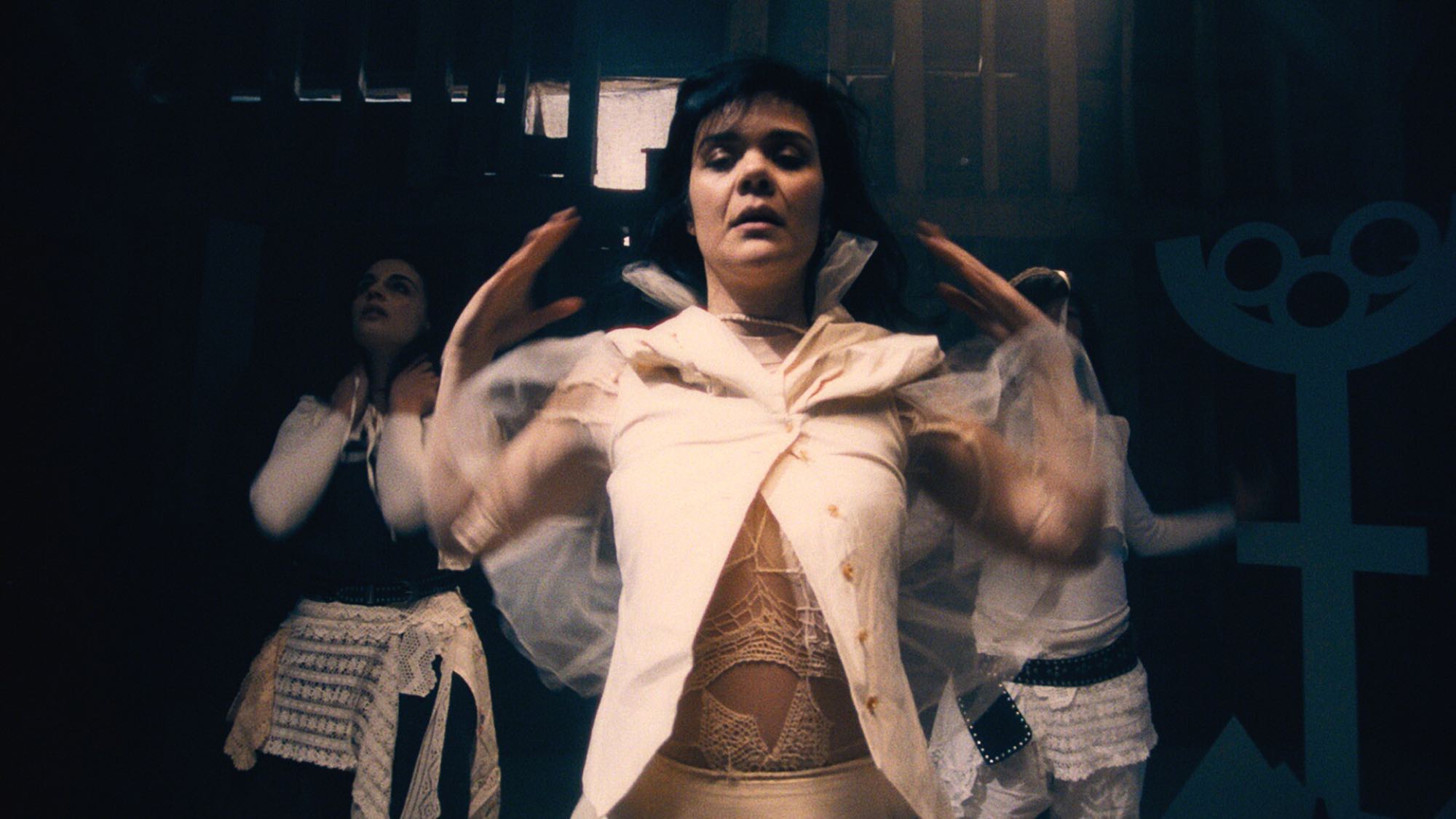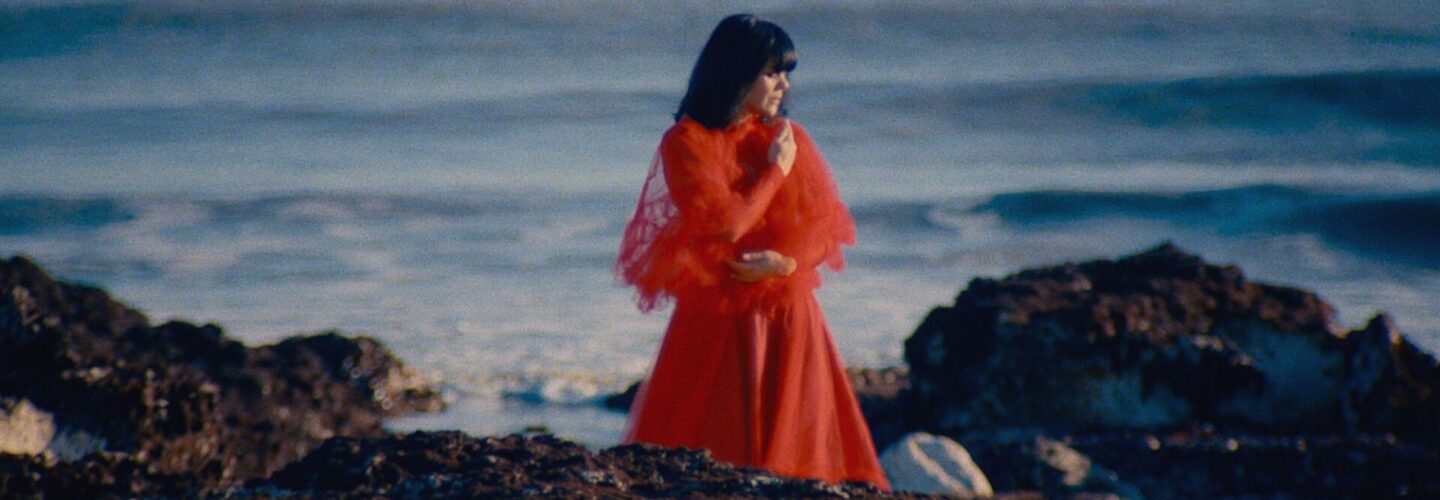
Bat For Lashes’ The Dream of Delphi music video from filmmaker Freddie Leyden – who last joined us here on DN with Under the Skin of a Guild: Wake of Lost Souls, a movement based indictment of London Guildhall’s legacies of slavery and colonisation – combines 70s folk horror influences with surreal imagery and retro camera-trickery to invoke a palpable atmosphere of dreamlike ethereality. The video stars Bat For Lashes’ Natasha Khan as, initially, a lone figure, dressed in an eye-catching red dress, flowing and weaving her way through the mystifying electronic tones of the song. It’s very much a video that understands the power of colour, costume and composition, and how through a tight combination of each of those elements, an effective and transportive ambience can be created. We caught up with Leyden for a chat about his hypnotic video, where he talks about everything from the camera tricks he used to capture a duality between the ancient and the contemporary to the importance of costuming and location work in establishing the video’s mythological spirit.
How developed was the video when you were first contacted about directing it?
When I came on board to direct the films for this project the Creative Director Alexandra Green and Natasha had already established a thematic world and had laid the blueprint of what this project could be. The opening song, The Dream of Delphi, was “The Invocation of the Motherwitch”. I felt a deep connection to the themes and spirit of the project. My immediate instinct was to tap into these themes of spirituality and folklore.
Visually, I felt a strong connection with folk horror. Did you draw from any cinematic or artistic influences when developing the aesthetic of the video?
70s folk films and mid-century surreal cinema greatly inspired our compositions and cinematography choices. We aimed to find a duality between the ancient and contemporary. Collaborating with Cinematographer David Bird, we decided to use a specific 70s analog lens that would have been employed for filming television documentaries in the 70s and 80s. It proved incredibly versatile and provided the best zoom. This zoom became a way of punctuating the piece, creating a first-person intimacy in the visuals. I’m particularly proud of the distinct look and character we achieved, and I’m pleased that we remained consistent in using it throughout. This look was further enhanced by the expertise of colourists Toby Tomkins and Mara Ciorba at CHEAT.
We decided to use a specific 70s analog lens that would have been employed for filming television documentaries in the 70s and 80s.

And your locations also give off that vibe, with the beach, the forest and then the barn towards the end. Were you looking to bake that into the production design/location work?
We assembled a great team to bring this project together, and I’m particularly pleased with the overall look achieved in the barn that appears towards the end of the video. Shot in a genuine 17th-century barn, the shafts of light filtering through holes in the wood were beautifully amplified and controlled by gaffer James Duffy. Additionally, Art Director Richard Nik Evans designed the sculptures that appear on the set, incorporating symbols adapted from the myths surrounding the Temple of Delphi in Greece. Serendipitously, these symbols often resonated with the themes in the music.
Who developed the costumes and what conversations were you having with them about that aspect of production?
The costumes and styling, overseen by Lucy James, were exceptional. Lucy had been collaborating with Alexandra and Natasha on the campaign before the music video, styling for live shows and the album cover. However, she truly outdid herself with the looks for this video, achieving a delicate balance between an ancient and contemporary aesthetic, giving the looks a sophisticated and ancient edge to Natasha and the dancers’ costumes.


It’s a piece most certainly driven by choreography and Natasha’s movement. Could you talk about working on that with her?
Alexandra Green, a world-renowned choreographer, brought breathtaking movement to this piece. Her ability to encapsulate seemingly mundane actions and amplify them into something sacred is truly remarkable. Working with Alexandra is a joy; the choreography throughout is stunning and special. And we were so lucky to have the mind-bendignly talented Caterina Danzico and Chihiro Kawasaki accompany Natasha for the dance sequences.
Her ability to encapsulate seemingly mundane actions and amplify them into something sacred is truly remarkable.
How are you reflecting on the making of the video now that it’s out there for audiences to watch?
The music is inspiring and vital, and I was honoured to create visuals for it. The passion poured into this project was immense. I had an amazing few months working with Natasha and Alexandra, tapping into the 70s folk horror aesthetic and drawing inspiration from a host of themes and approaches from surrealist cinema while also developing some new techniques of our own.

Is the red dress a nod to Don’t Look Now? Are there any other specific nods to certain films/other pieces of art?
I love that you’ve noticed the nod to Don’t Look Now. The red dress was already integrated into the world that Natasha and Alexandra had crafted for this album cycle, the look was assembled by the talented Stylist Lucy James. It serves as one of the pivotal outfits for the Motherwitch character. When it came to making the video, seeing this deep beautiful red dress Don’t Look Now served as a big inspiration. I admire Nic Roeg’s reliance on color to convey meaning; that film has so much symbolism throughout, something I aimed to incorporate into the Dream of Delphi video.
I’m always curious about how things are made. Music videos are this amazing opportunity to experiment and try different things.
Another 1973 film that is referenced in terms of cinematography is Wicker Man; the framing in that film guided us. Natasha is massively into film, we had lots of great conversations in pre-production about different references some more modern and maybe less obvious influences on this piece but which definitely filtered into the spirit of the video were Eternal Sunshine of the Spotless Mind and The Virgin Suicides. There are a couple of explicit nods to Maya Deren’s surrealist films, and we were definitely chasing the light on one of the shoot days in the country, trying to achieve that perfect Days of Heaven look. There is a particular nod in the edit to Boris Chamatz’s Les Disparates. I love dance art films and how they’re often put together in totally experimental ways; this is probably my most watched YouTube clip!
How do you find directing music videos specifically aids your development as a filmmaker?
Music Videos are an amazing opportunity to develop as a filmmaker. What initially drew me to filmmaking was formalism; I’m always curious about how things are made. Music videos are this amazing opportunity to experiment and try different things. I particularly love the failed experiments, that knowledge is priceless when you go on to make the next thing.
What’s next for you?
There are more music videos to come for Bat For Lashes as well as a longer piece in the pipeline. I’m in the final stages of post production of my own short film Farmers!? Which was filmed in Ireland last summer. At the moment I’m loving being in the space between film, art and music, but my plan is to make something feature length soon.


